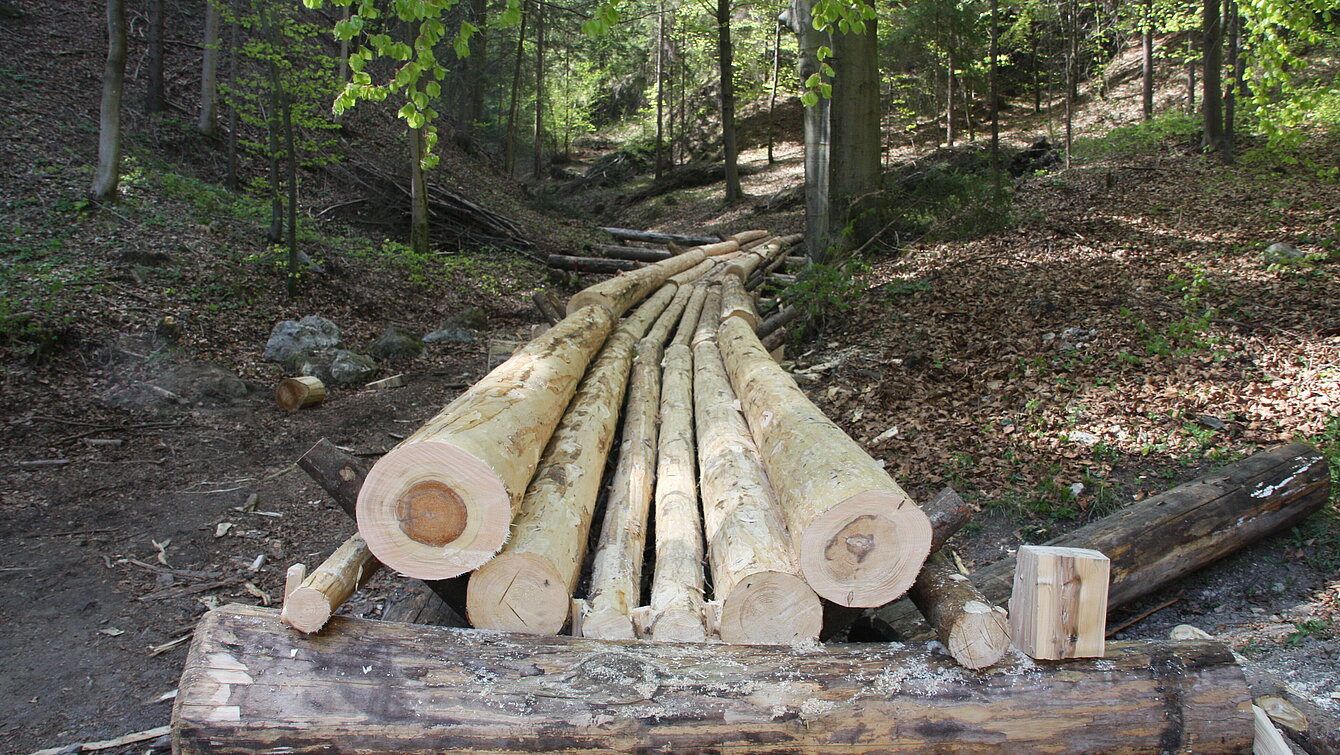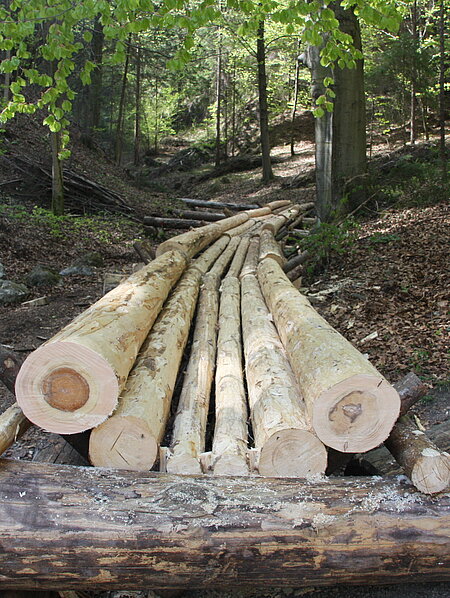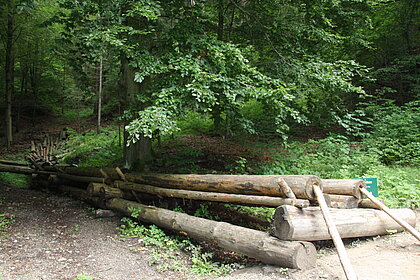Built: 2011 (reconstruction from the 19th century)
Discover the
Universalmuseum Joanneum
Graz
Styria
Closed

More than 85 animal species from all continents live in the Herberstein Animal World.
Universalmuseum
Joanneum
Back to Universalmuseum Joanneum
Austrian Open-Air Museum Stübing > Discover > Museum grounds > Valley of stories > The forest > Channel for wood
Channel for wood
Styria


Image Credits
The use of channels, naturally or artificially created channels in which the wood could slide down into the valley, already existed in Austria in the Middle Ages. They were particularly widespread in the 18th and 19th centuries. Depending on the layout and construction, several forms can be identified. The simplest is the Erdriese, an artificial earth channel made from natural hollows.
The channels for wood were of great importance where large quantities of wood had to be delivered in a short space of time. It consisted of yokes, the sliding channel and the giant chute. The design of the yokes, which equalised the gradient, depended on the terrain conditions. The sliding channel consisted of the ream mouth, the fan-shaped beginning of the ream, where the wood was thrown in. The ream itself was the actual slideway and consisted of compartments with 6-8 timbers arranged in a semi-circular channel. The ream throw at the end of the ream had an upward shape that slowed the wood down and threw it upwards.
sewer
Water channels were used to transport the wood into channels with the help of water. If the required amount of water was not available, a hermitage had to be created.
Image gallery
Channel for wood

Image Credits


















